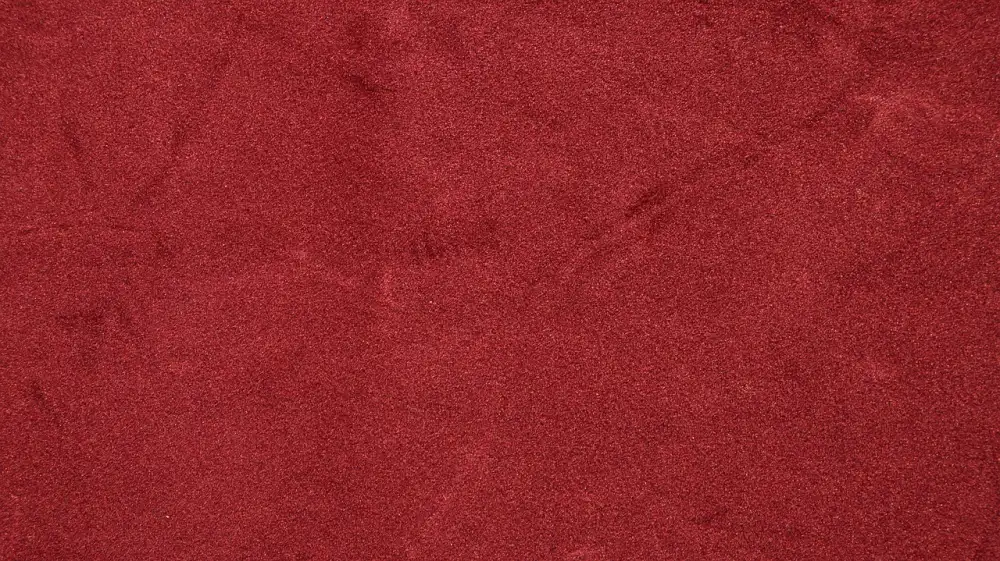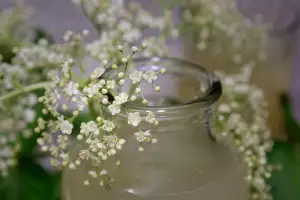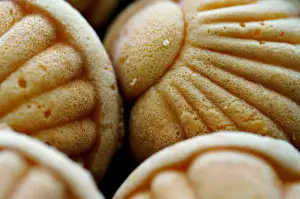Decoding Red Velvet: Unveiling the Mystery Behind this Iconic Dessert

- Origin of Red Velvet: A Brief History
- Key Ingredients of Red Velvet
- The Signature Red Color: Natural vs. Artificial
- The Role of Buttermilk and Vinegar
- The Importance of Cocoa Powder
- Cream Cheese Frosting: The Perfect Pairing
- Tips for Baking Red Velvet Cake at Home
- Variations of Red Velvet: Cupcakes, Cookies, and More
Red Velvet is a beloved dessert that has captured the hearts and taste buds of people around the world. With its rich, velvety texture and vibrant red color, it is truly a treat for both the eyes and the palate. But what exactly is Red Velvet? Is it just a fancy name for a chocolate cake with red food coloring? In this article, we will delve into the origins, ingredients, and secrets behind this iconic dessert. Get ready to uncover the mystery of Red Velvet and learn how to recreate it in your own kitchen.
Origin of Red Velvet: A Brief History
The exact origin of Red Velvet cake is shrouded in mystery, but it is believed to have originated in the United States during the early 20th century. Some say it was first served at New York City's Waldorf-Astoria Hotel, while others claim it was popularized in the South.
One theory suggests that the cake's distinctive red color was a result of a chemical reaction between cocoa powder and acidic ingredients like buttermilk and vinegar. Another theory proposes that beet juice or food coloring was used to achieve the vibrant red hue.
During World War II, when rationing limited the availability of ingredients, bakers started using boiled beets to enhance the color. This practice continued even after the war ended, giving rise to the rich red velvet cakes we know today.
Regardless of its true origins, Red Velvet has become an iconic dessert loved by many. Its unique flavor and velvety texture have made it a staple at weddings, birthdays, and other special occasions.
Key Ingredients of Red Velvet
The key ingredients that give Red Velvet its unique flavor and texture are flour, sugar, butter, eggs, cocoa powder, buttermilk, vinegar, and a touch of vanilla extract. These ingredients work together to create a moist and velvety cake with a hint of tanginess.
The ratio of these ingredients is crucial to achieving the perfect balance. The flour provides structure, while the sugar adds sweetness. Butter adds richness and moisture to the cake. Eggs act as a binder and help in creating a light and fluffy texture.
Cocoa powder is what gives Red Velvet its distinct chocolate flavor. It also contributes to the deep red color of the cake when combined with other ingredients. Buttermilk adds moisture and tenderness to the cake, while vinegar helps enhance the flavor and tenderize the gluten in the flour.
Lastly, a touch of vanilla extract brings all the flavors together and adds depth to the overall taste profile of Red Velvet.
Getting these key ingredients right is essential for creating an authentic Red Velvet dessert that will leave your taste buds craving for more.
The Signature Red Color: Natural vs. Artificial
One of the most distinctive features of red velvet is its vibrant red color. But where does this striking hue come from? Traditionally, the color was achieved through a chemical reaction between cocoa powder and acidic ingredients like buttermilk and vinegar. This reaction enhances the natural red pigments in cocoa, giving the cake its characteristic reddish-brown shade.
However, in modern times, many bakers opt for artificial food coloring to achieve a more intense and consistent red color. While this may be convenient, it's important to note that artificial dyes can have potential health concerns. If you prefer a more natural approach, you can use beetroot powder or juice as a substitute for food coloring. This not only adds a beautiful red hue but also provides additional moisture and flavor to the cake.
Ultimately, whether you choose natural or artificial coloring is a matter of personal preference and dietary considerations. Just remember that the true essence of red velvet lies in its rich flavor and velvety texture rather than solely relying on its vibrant color.
The Role of Buttermilk and Vinegar
One of the key ingredients that give Red Velvet its unique flavor and texture is buttermilk. Buttermilk not only adds a tangy taste but also helps to keep the cake moist and tender. It reacts with the other ingredients, such as baking soda, to create a light and fluffy texture.
Vinegar is another important component in Red Velvet. It works in conjunction with the buttermilk to enhance the cake's red color. The acidity of vinegar intensifies the natural red pigments in cocoa powder, resulting in that vibrant red hue we associate with Red Velvet.
Buttermilk and vinegar also play a crucial role in activating the leavening agents in the cake batter, ensuring that it rises properly during baking. They help create a delicate balance between acidity and sweetness, giving Red Velvet its distinct flavor profile.
When making Red Velvet at home, it's essential to use real buttermilk rather than substituting it with regular milk or sour cream. The acidic nature of buttermilk is vital for achieving the desired texture and taste. Similarly, using white distilled vinegar or apple cider vinegar instead of other types will yield better results.
So next time you're whipping up a batch of Red Velvet treats, don't forget to include these two secret ingredients – buttermilk and vinegar – for an authentic and delicious experience.
The Importance of Cocoa Powder
Cocoa powder plays a crucial role in creating the distinct flavor of red velvet. Its rich, deep chocolate taste adds depth and complexity to the cake. However, it's important to note that red velvet is not meant to be a heavily chocolate-flavored dessert like a traditional chocolate cake. Instead, cocoa powder is used in just the right amount to enhance the overall taste and balance the sweetness. So, when baking red velvet at home, make sure to use high-quality cocoa powder for the best results.
Cream Cheese Frosting: The Perfect Pairing
Cream cheese frosting is the perfect pairing for red velvet cake, adding a tangy and creamy element that complements the rich flavors of the cake. The smooth and velvety texture of cream cheese frosting provides a delightful contrast to the moist and fluffy cake layers.
To make cream cheese frosting, you will need cream cheese, butter, powdered sugar, and vanilla extract. It is important to use full-fat cream cheese for the best results as it provides a richer flavor and smoother consistency.
Start by beating softened butter and cream cheese together until they are well combined. Gradually add powdered sugar, a little at a time, while continuing to beat the mixture. This will ensure a smooth and lump-free frosting. Finally, add a splash of vanilla extract for extra flavor.
Once your red velvet cake has cooled completely, generously spread the cream cheese frosting over each layer. You can also frost the sides of the cake for a beautiful finishing touch. For an added touch of elegance, you can decorate with some red velvet crumbs or chocolate shavings.
The tanginess of the cream cheese perfectly balances out the sweetness of the cake, creating a harmonious blend of flavors. The creamy texture adds an indulgent element that elevates this classic dessert to new heights.
Whether you are baking red velvet cake for a special occasion or simply craving a delicious treat at home, don't forget to top it off with luscious cream cheese frosting. It's truly the perfect pairing that will leave your taste buds wanting more.
Tips for Baking Red Velvet Cake at Home
1. Measure accurately: Use a kitchen scale to measure the ingredients precisely. This ensures the perfect texture and taste.
2. Room temperature ingredients: Allow the butter, eggs, and buttermilk to come to room temperature before using them in the recipe. This helps in achieving a smooth batter.
3. Sift dry ingredients: Sifting the flour, cocoa powder, and baking soda together removes any lumps and aerates the mixture for a lighter cake.
4. Mix gently: When combining the wet and dry ingredients, mix just until they are incorporated. Overmixing can result in a dense cake.
5. Use quality cocoa powder: Opt for high-quality cocoa powder as it adds richness and depth of flavor to your red velvet cake.
6. Don't skimp on food coloring: If you're using natural food coloring, add enough to achieve a vibrant red color. Artificial coloring may require less quantity.
7. Bake at the right temperature: Preheat your oven properly and bake the cake at the recommended temperature mentioned in the recipe for even cooking.
8. Check for doneness: Insert a toothpick into the center of the cake; if it comes out clean or with few crumbs, it's ready! Overbaking can result in a dry cake.
9. Cool completely before frosting: Allow the cake to cool in its pan for 10 minutes, then transfer it to a wire rack to cool completely before applying cream cheese frosting.
10. Frost with care: Apply a thin layer of frosting on top of each layer before stacking them together. Then frost the sides and top evenly for an elegant finish.
By following these tips, you'll be able to create a delicious homemade red velvet cake that rivals any professional bakery's creation!
Variations of Red Velvet: Cupcakes, Cookies, and More
While the classic red velvet cake is undeniably delicious, there are many other ways to enjoy this iconic dessert. One popular variation is red velvet cupcakes. These miniature versions of the cake are perfect for individual servings and can be topped with a dollop of cream cheese frosting for an extra touch of indulgence.
If you're looking for something bite-sized, red velvet cookies are a great option. These soft and chewy treats are made with the same key ingredients as the cake but in a compact form. They can be enjoyed on their own or sandwiched together with a layer of cream cheese frosting.
For those who prefer a lighter option, red velvet trifle is an excellent choice. Layering cubes of red velvet cake with whipped cream and fresh berries creates a delightful dessert that is both visually appealing and satisfying to the taste buds.
If you're feeling adventurous, why not try making red velvet pancakes? Adding cocoa powder and red food coloring to your pancake batter will transform your breakfast into a decadent treat that is sure to impress.
No matter which variation you choose, one thing remains constant - the rich and velvety texture that makes red velvet so special. So go ahead and get creative in the kitchen, experimenting with different forms of this beloved dessert.
Now that you have learned about the history, ingredients, and techniques behind red velvet desserts, it's time to bring the magic into your own kitchen. With a little practice and attention to detail, you can create restaurant-quality red velvet treats right at home.
Remember to use high-quality ingredients and follow the recipe closely. Don't be afraid to experiment with different variations like red velvet cupcakes or cookies. The possibilities are endless!
Whether you're celebrating a special occasion or simply indulging in a sweet treat, red velvet is sure to impress. So gather your baking tools, put on your apron, and get ready to create delicious red velvet delights that will leave everyone craving for more. Happy baking!
Published: 20. 11. 2023
Category: Recipes



